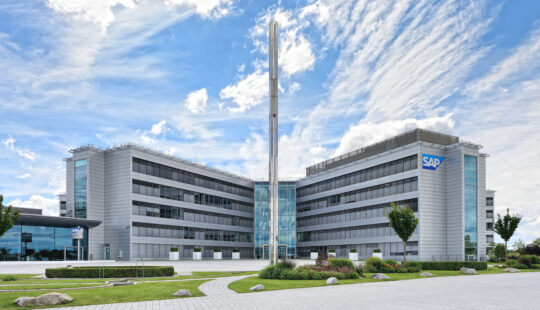A customer-first mindset means thinking constantly about not only your customer, but also your customers’ customers — and all of their employees. This is first and foremost on the mind of Martin Mrugal, global head of Customer First at SAP.
“During the COVID-19 pandemic, enterprise after enterprise has proven that the safety of their employees, service to customers, and commitments to stakeholders are top priorities,” he says. “It’s our job to passionately champion our customers by providing the best tools, services, and inspiration to help them meet their obligations and thrive in the process.”
https://www.youtube.com/watch?v=ZMsSsXFqZNw
Mrugal shared some incredible customer stories of the many positive outcomes achieved by customers that have a strong partnership with SAP.
Faurecia, a global automotive supplier, focused first on the protection of its employees and then strengthened its liquidity to reassure stakeholders the company could face any challenges presented by the crisis. It also took the opportunity to develop resilience across its supply chain and to speed up CO2 neutrality through the procurement of decarbonized energy and steel. Despite the lockdown, Faurecia gathered more than 1,000 suppliers online to help jointly ensure the continuity of the supply chain and make sure they are ready for recovery.
Swiss retail giant Coop used a new forecasting tool to help ensure supermarket shelves were fully stocked so customers could get supplies. It also temporarily transferred employees from its non-food business areas, which were closed during the crisis, to work in understaffed warehouses and distribution centers.
Lamb Weston, a North American purveyor of potato products, increased sanitation practices at all locations and only allowed business-critical visits to its manufacturing plants to prevent the spread of the virus. It also optimized inventories, enabling the company to shift supplies to grocery stores that needed more potato products.
“These are just a few examples of how SAP customers are laser-focused on their people and their businesses,” says Mrugal. “We’re seeing that everybody around the globe is going through some variation of the exact same challenges. Now more than ever, we are increasing our level of engagement and thinking creatively to increase our collaboration and connectivity with customers through virtual and digital engagements.”
When asked about his role, Mrugal explains that Customer First is at once a mindset, an engagement model, and an organization built around better customer engagements — all rolled into one.
“The true measure of SAP’s success is the success of our customers. This concept is embedded in our DNA,” he says, as he tells the story about an SAP sales rep who helped a customer locate 500 hospital beds within 30 minutes for a makeshift hospital in New York at the height of the pandemic. “The sales rep got a call from a supplier, Ram Tool Construction Supply, that was helping a contractor build the hospital. The SAP rep used the SAP Ariba Discovery tool to quickly fill the need.”
Mrugal notes that since SAP gave customers free access to SAP Ariba Start Sourcing in mid-March 2020, buyer postings on it have increased by 58 percent and supplier responses have increased by 404 percent compared to the period January 1 to March 9, 2020.
Providing free software is one way that SAP demonstrates its customer-first mindset. SAP also offers customers free access to several key solutions from SAP and Qualtrics.
“Customers are taking advantage of our free offerings,” says Mrugal. “Qualtrics enables them to survey and keep a pulse on their employees to really make sure that they are safe. That’s paramount in today’s environment.”
Mrugal has a mantra of three critical steps organizations must take to successfully survive the crisis. The health and safety of employees, customers, and communities is at the top of the list.
Next, clear and consistent communication is vital. Mrugal says it is critical to keep the lines open with customers and to stay connected: “We must understand in real time where our teams or customers have concerns, and we need to address them immediately.”
Finally, Mrugal believes that maintaining continuity ensures that SAP’s level of engagement is not lowered; rather, it affirms that SAP is changing how well — not just how much — it engages with customers.
“In many cases, we are even more engaged with our customers than ever before as we navigate this unusual time together,” says the long-time SAP executive, who believes the role of his organization will continue to evolve as the needs of SAP and its customers continue to transform.
One thing, however, will never change: a steadfast focus on the customer will always come first.
Listen to more episodes of In Focus.



